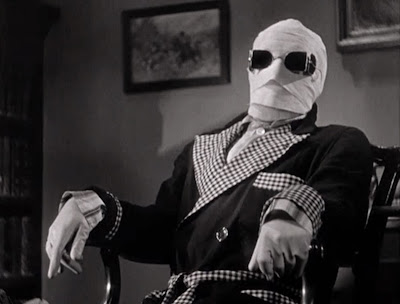 |
| Alan Hale |
Alan Hale, Sr. (not to be confused with his son, the Skipper of "Gilligan's Island") was a very unique personality in both silent and studio era cinema. A big lug, generally mustached, he would become familiar with audiences by portraying the befuddled man's man with a loud, raucous laugh, clumsy yet aggressive physicality, and his very expressive eyes-- usually twinkling. Appearing in nearly 250 films (that we know of) in a less the 40-year career, his energy, comic skill, and integral depth allowed him to easily traverse multiple genres and play the bad guy, the good guy, the drunk guy, the oaf, the clown, the tough, and most often, the best friend.
Alan's big voice encouraged him to pursue a career in the opera, which makes it interesting that he found a home for himself in silent cinema. However, the creativity and curiosity of his ever-spinning mind-- which led him to an initial career as an inventor (of foldable theater seats among others)-- also instilled within him a natural penchant for unique characterizations. For a man constantly tinkering with objects to see how they worked, cracking a fictional character open and making it tick was an easily adapted talent. His hammy, fun-loving personality only bolstered his appeal, giving him an unlikely charisma onscreen, which made him one of the most popular and beloved character actors of his generation.
While as a fresh-faced 20-year-old he was able to land the lead in several pictures, it was his uncanny knack at supporting parts, those that added flavor and drove the plot of the story, which would provide for him a comfy position on the Warner Brothers roster. As such, he moved from a series of short film appearances to playing opposite Rudolph Valentino in The Four Horseman of the Apocalypse, Lon Chaney in The Trap, and Douglas Fairbanks in the epic Robin Hood. His role in the latter was that of Little John, one that he would repeat sixteen years later opposite his good friend Errol Flynn in the 1938 version, The Adventures of Robin Hood.
In fact, it is with Errol that Alan is most associated, as these hard-living, boisterous boys in cahoots got along swimmingly both on and off screen. They appeared in several features together, including The Prince and the Pauper, Dodge City, and The Sea Hawk. Alan's success at WB after the talkie revolution is beyond impressive. He was an uncouth buffoon in Stella Dallas, the notoriously flagged down driver (or should I say "legged") in It Happened One Night, and the ne'er-do-well married lover of Bette Davis in Of Human Bondage. He appeared in Great Expectations, Imitation of Life, They Drive By Night, Algiers, The Man in the Iron Mask, The Strawberry Blonde, etc, etc, etc, always lending the lead players his support and improving their performances with his own reliable and inspirational characterizations. One might even say that he was a bit of a scene stealer. He created a natural effect in his scenes, locking them in reality and adding nuance and complication to even the most saccharine or melodramatic plots.
Alan passed away at the age of 57 far too soon. His talents could have easily translated to television had he more time to continue his thespian explorations. However, problems with his liver and a viral infection led to his untimely, premature passing, leaving behind his wife of 35 years and 3 children-- including his equally famous, doppleganger son Alan Hale, Jr. Less recognized than his contemporaries for his contribution to the cinematic arts, his presence in retrospect seems so fundamental to the success of so many classic films that is hard to imagine Hollywood history without him. When he appeared on screen, audiences knew a little something extra was coming their way. That 'something' was usually just having a more thoroughly entertaining and enjoyable night at the movies. At the very least, it meant life was about to get interesting.













_04.jpg)















